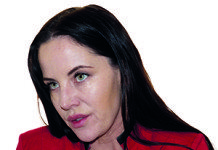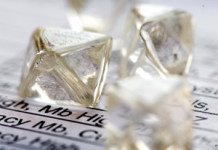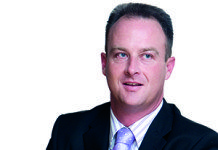
[miningmx.com] — CONTROVERSIAL Aquarius Platinum CEO Stuart “King Rat’ Murray has kept uncharacteristically below the radar for much of the past two years but has just again proved why he’s the most innovative executive in South Africa’s platinum sector.
The two deals he’s pulled off in first half 2011 – to acquire Booysendal South and Afarak – have removed the foundation for the perennial criticism levelled at Aquarius: that it has an unhealthy short life expectancy compared with the platinum majors.
RBC Capital Markets analyst Leon Esterhuizen summed up Aquarius’s new position this way in a recent research report when stating: “Short life? What short life? The Booysendal South acquisition is set to extend the life of the Everest South mine from about eight years to well over 30 years.
“The Afarak deal similarly expands the potential Western Limb life well beyond its current eight-year life for Kroondal. Given the potential to use some of the recent land acquisitions in “asset swaps’ Kroondal and Marikana could well see life in the immediate vicinity extended well.’
Though Murray agrees those are “game-changing’ deals for Aquarius he’s still scathing about those analysts who have continually harped over the years about Aquarius’s remaining economic life. “Those analysts simply don’t understand our business. They look at lines on the map and conclude that in 10 years or so our Kroondal and Marikana mines will have to shut down because they’ll run out of reserves.
“The point is those platinum ore bodies extend beyond our current boundaries and we own the best points of access to the next incremental ounces. The logical outcome is the existing pool and share joint venture agreements will be extended through sensible, commercial agreements with our neighbours as and when it’s necessary to do so.’
The probability of those pool and share agreements being extended has been improved greatly through its Afarak acquisition in particular, because it includes ground adjacent to existing operations of two of the industry’s “gorillas’ – Anglo American Platinum (Amplats) and Impala Platinum (Implats).
Says Murray: “Through Afarak we’ve acquired a whole range of mineral rights – some of which are of interest to Amplats and some of interest to other parties. We think we’ve been quite good at tearing down farm fence boundaries with our neighbours.’
‘KING RAT’ NO LONGER
As an aside: Murray got the nickname “King Rat’ after famously describing the South African platinum industry to an investment conference in Australia as consisting of “three, six hundred pound gorillas (Amplats, Implats and Lonmin) and a whole lot of rats and mice, of which we like to think of Aquarius as King Rat’.
Murray now reckons Aquarius has moved past the rodent stage and is knocking on the doors of becoming a major.
“People forget we’re mining up to one million ounces of platinum group metals (PGMs) a year. Granted, our attributable production is only a little under 600 000 oz but I’d call any company mining a million ounces a year a major.’
Aquarius pioneered the pool and share concept in SA’s mining industry but it was tough going with the first attempt – between Aquarius’s predecessor Kroondal and Amplats – failing because it was too heavily weighted in favour of Amplats.
That was before Murray took over as CEO and he quips that “. whatever you may say about (former Amplats CEO) Barry Davison, he was a good businessman’. The revised attempt was more successful and Murray describes pool and share agreements as like “getting married with an ante-nuptial contract setting out the terms up front in case of a split that are so unpalatable neither side is going to venture anywhere near it’.
A worrying aspect is Murray’s current pessimism about the general business conditions facing the platinum industry – one remaining sector of the global mining business SA still dominates. SA’s platinum mines are being hit by the strong rand limiting the benefits of increases in the US dollar prices of PGMs, as well as by increases in working costs – such as labour and power – which are running way in excess of the domestic inflation rate.
Murray is concerned platinum mines could go the same way as SA’s goldmines and believes many of the junior platinum companies are heading into very stormy waters.
“I worry about the South African platinum industry going the same way as the gold industry. Look at what happened to the goldmines in the Seventies and Eighties. You got all sorts of horrendous allocations of capital, because people didn’t co-operate and didn’t tear down farm boundaries.
“There’s been an awful lot of money thrown at marginal platinum resources that shouldn’t have been attempted as any kind of start-up. There was a stage just before the bust in 2008 where – if you added up the market capitalisation of the junior sector, which hadn’t produced an ounce of platinum – it was a huge percentage of the market caps of the majors. So that made a mockery of the allocation of capital into the sector.’
Murray adds: “This is a boom and bust industry. The cycles are getting shorter, the volatility is getting greater and it’s getting harder to get a decent return out of new investments. I believe this industry is overly fragmented to weather the storms that crop up. It generates above average returns for a couple of years every decade.’
BLAMEWORTHY MPRDA
Murray reckons the fragmentation is a direct result of the Minerals and Petroleum Resources Development Act (MPRDA), which “opened the industry up to a free-for-all’. “That may sound anti-competitive. Reality is, platinum is a lovely metal – but you can’t have unbridled expansion in it because that will lead to further deterioration of industry margins and its well-being, with too much production and too few buyers. There’s no scarcity of these metals.
“If you apply that reality to some of the more barking mad junior prospects out there you realise at the end of the day a lot of it is going to end in tears. A platinum mine these days starting out of the blocks probably needs to show a 40% gross margin. There are not many shafts or mines left in the platinum industry today in that region.
“That kind of margin may appear obscenely high to someone who makes fridges but it’s not. You need it to cover the risks involved in a project in which you have to sink capital over a 10-year period. At the current anaemic basket price of around R10 100 for an ounce of PGMs produced from the UG2 reef on the Western Limb (of the Bushveld Complex near Rustenburg) I’m not sure there’s anyone returning a satisfactory enough margin to think about the future. Everybody is thinking only about tomorrow.’
You could accuse Murray of talking to his own book but, as he points out, Kroondal/Aquarius is one of very few start-ups that have actually survived in a platinum business that’s proved a very tough nut to crack.
Murray adds: “I’m finding a little bit beyond comprehension the billions of rand being sunk into new, single asset start-ups that don’t enjoy tax shields from existing operation and have no infrastructural support. The last integrated start-up from scratch was Northam Platinum in the mid-Eighties and, as I recollect, that blew up the mighty mining house that was Gold Fields of South Africa.
“Good on them (the new entrants) if they get it to work and the price regime required prevails. If the prices prevail in five to 10 years that make the Wesizwes (Wesizwe Platinum) and the Lesegos (Lesego Platinum, which is controlled by Bernard Swanepoel’s Village Main Reef) viable then I know my shallow stuff with its extended life will generate so much money I won’t know what to do with it all, except give it back to shareholders.’
Murray has been running Aquarius for the 10 years since he left Implats, after being overlooked for the CEO job. So there’s an obvious question: What are his plans for his own future?
“Aquarius has been slowly built up over the past 10 years. I can’t think of a year where we didn’t do something that changed the outlook for the company in one way or another.
“At times there’s been a little too much excitement, but the business model has survived – which a lot of people said it would not. We’ve built a company that’s knocking on the door of the FTSE 100 that 10 years ago was just an ordinary Perth-managed spivvy.
“I’m here to stay until we get deliverance: that’s a truly company changing transaction that probably comes out of acquisition – one way or the other.’
– Ryan holds shares in Aquarius.











